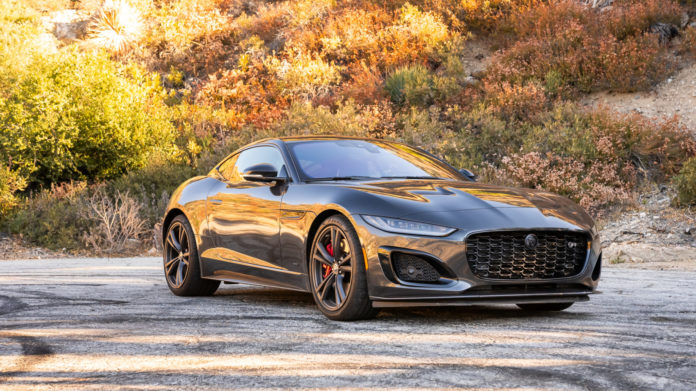No other car lives rent-free in the minds of automakers like the Porsche 911. Logic tells us that, by and large, six-figure sports cars will never be volume sellers, yet the 911 consistently is. In 2023, Porsche sold 11,728 911s despite the cheapest variant starting at $106,100. In its best year, the AMG GT sold just over 4,000 units, while the Jaguar F-Type peaked at 4,659 in 2015. Last year, Porsche shifted ten 911s for every F-Type sold.
On paper, the Jag should have the advantage. For 2024, its range-topping P575 R75 AWD variant starts at $113,000. That’s $1,400 less than the cheapest 911 Carrera. It’s more powerful, too, with its 5.0-liter supercharged V8 producing 575 horsepower, far more than the Porsche’s 379-hp entry-level 3.0-liter flat-six. There’s even a solid foundation for an argument that the F-Type is the prettier machine of the pair. With long-hooded 60s E-Type proportions and a wide and imposing stance, it’s stunning.
However, look beyond the surface level and the problems that have historically held the Jaguar F-Type back appear. Its monster engine may be characterful and engaging, thanks to a throaty engine note, but it lives in a chassis that can’t fully keep up. Like its exterior styling, its cabin is elegantly designed, but everything you interact with feels cheaply made. The secret behind the Porsche 911’s success is its versatility and well-roundedness. Unlike the car Jaguar explicitly set out to dethrone, the F-Type’s reliance on good looks and a stellar powerplant isn’t enough to make up for a lackluster driving experience.
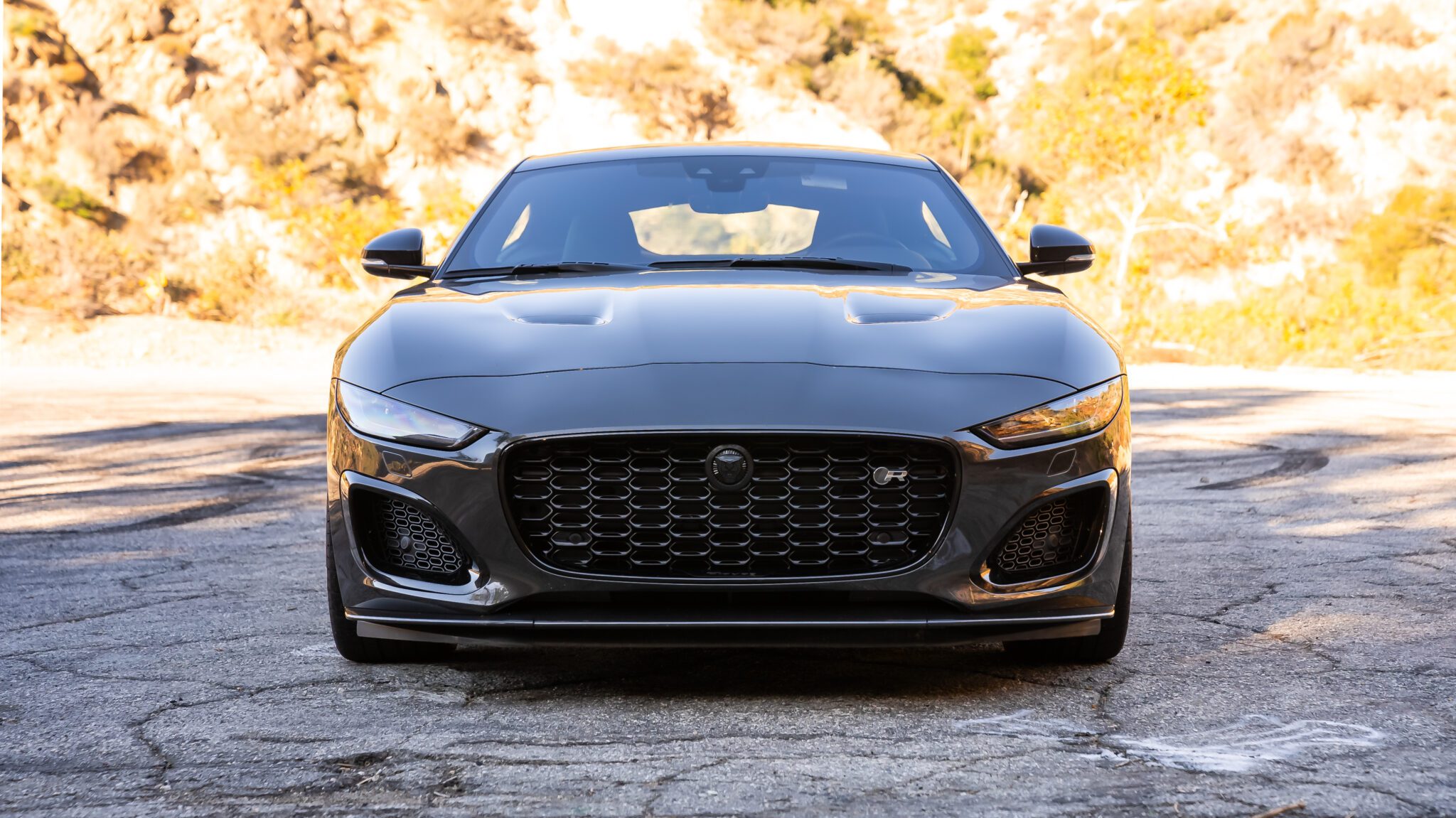
The Jaguar F-Type turns ten this year, but thanks to a major facelift in 2019, it looks better than ever. Gone are its vertically oriented LED headlights and small grille, instead replaced by wider horizontally oriented lamps flanking a broadened front opening. Its front bumper extends prominent lines that originate from its updated hood, while its F-Type SVR-inspired restyled rear bumper sits below new slimmer tail lights.
The updated F-Type’s styling works primarily because of the excellent foundations laid by its predecessor. With its elegantly sloping roof, passenger compartment positioned just ahead of the rear axle, and lengthy hood that dips significantly, this Jag’s 60s inspirations are evident in practically every body panel. It’s one of few instances in which a new car effectively references the past without stepping into the often banal world of retro styling.
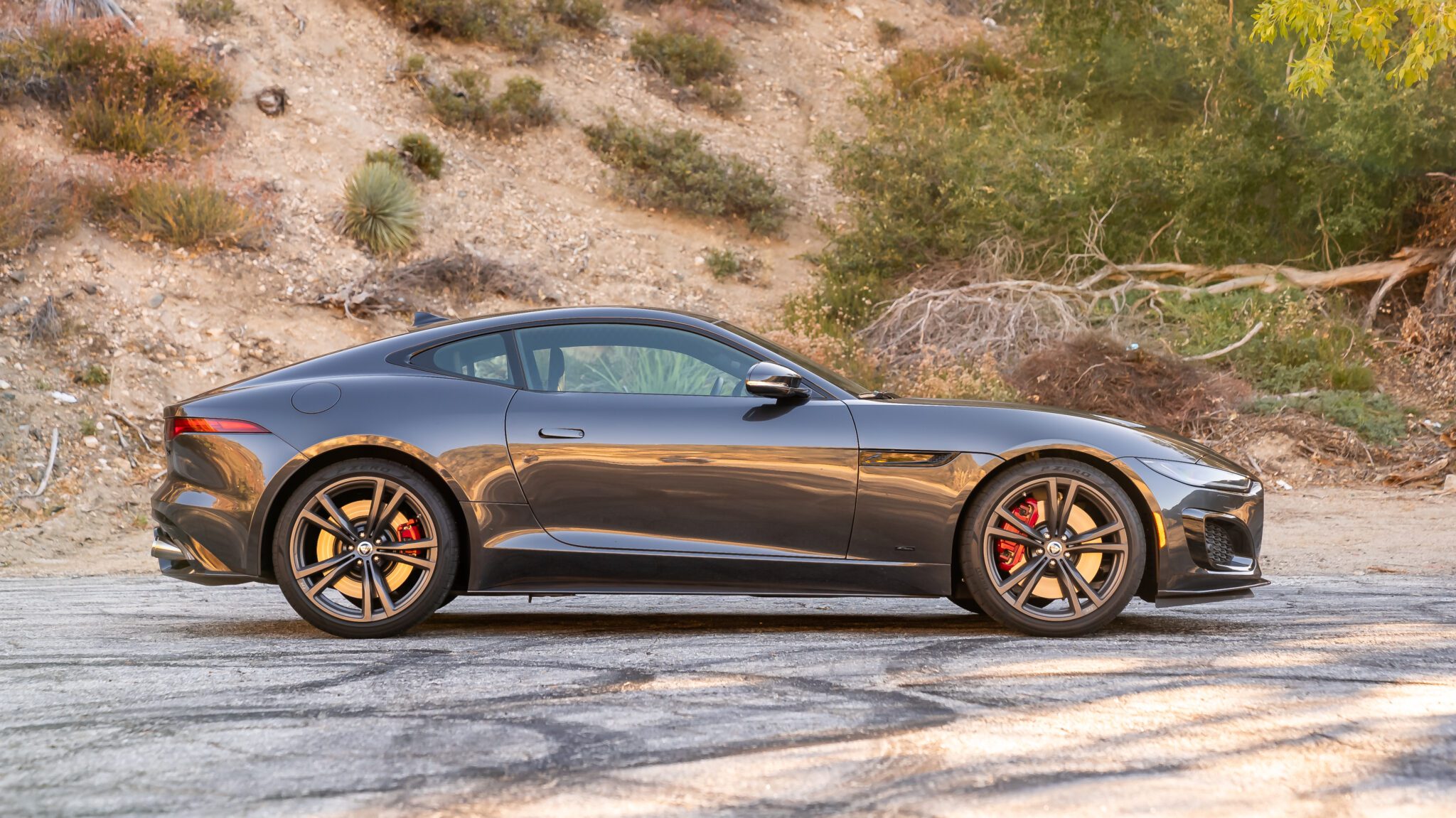
Press its start button, and you’re met with roaring muscle-car-like noises from its quad exhaust tips. Alongside the F-Pace SVR and the Land Rover Defender V8, the 2024 Jaguar F-Type is one of the final cars JLR’s venerable 5.0-liter supercharged V8 will ever power. With roots tracing back to the mid-90s, it now develops 575 hp and 516 pound-feet of torque, enough to propel the R75 to 60 mph in 3.5 seconds and on to an electronically limited top speed of 186 mph. An eight-speed automatic transmission sends power to a standard all-wheel-drive system.
With plenty of torque coming on strong at lower revs and a linear powerband, the F-Type’s power delivery is immediate and powerful. Previous rear-drive iterations of the R75 were a handful to control, eager to swing their tails with even the slightest throttle input. It was wild enough for Jag to introduce an all-wheel-drive model in 2015. Unfortunately, in making the F-Type more accessible to a broader audience, the carmaker also dialed back the lunacy, which was and remains a significant point of appeal.
The pro is that the R75 puts all of its power down with little effort. The con is that it requires minimal skill from its driver to reign in, thus making it less engaging. Push its limits, and you’ll quickly run into understeer and a front end that isn’t particularly agile or communicative. Despite counting on adaptive dampers, helped by updated springs and anti-roll bars, the F-Type rolls considerably in the corners without its chassis transmitting much feedback from the road below. Although Jag re-calibrated its electric-power steering system, it’s still relatively numb and slow.
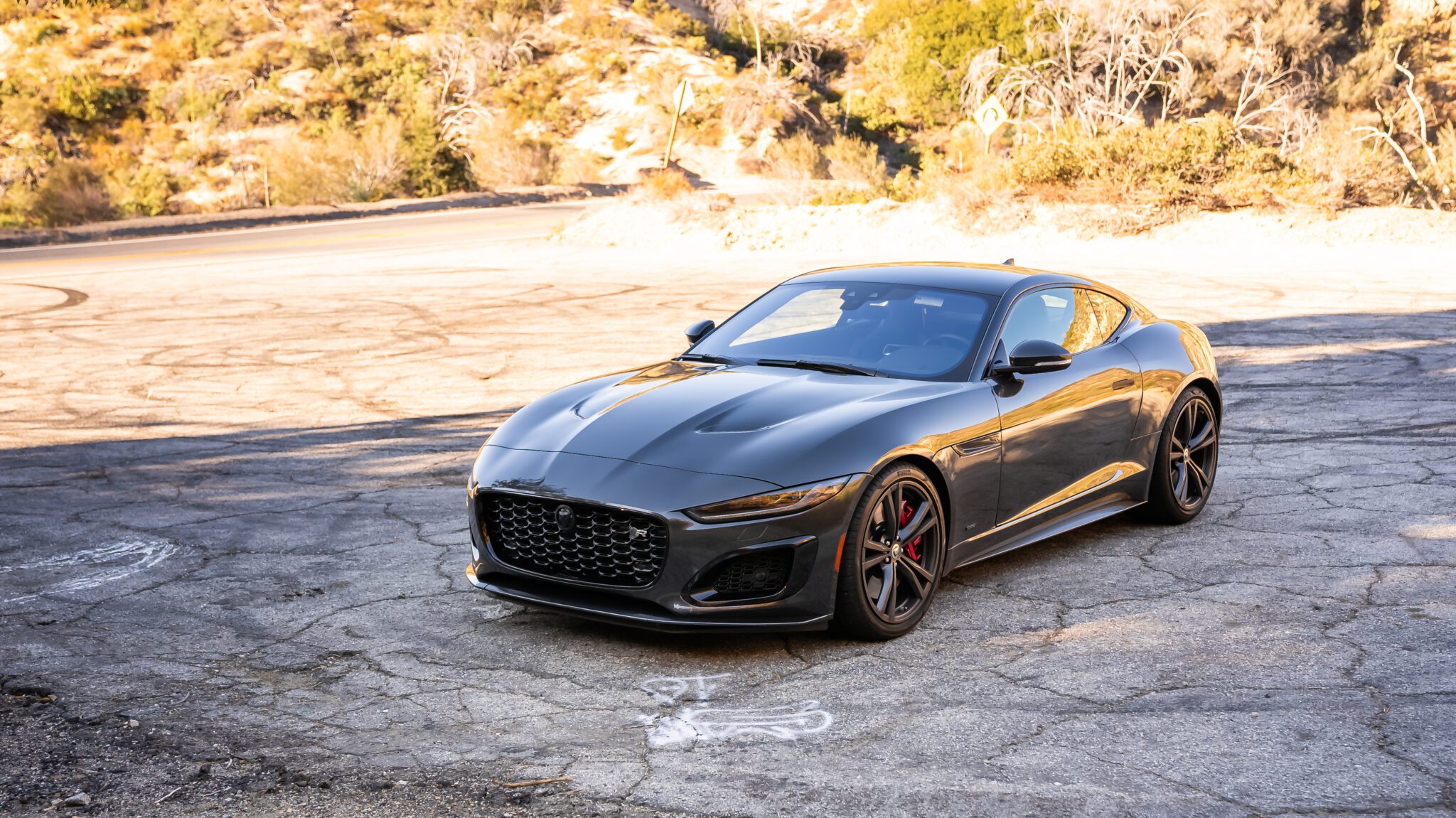
Its Pirelli P Zero rubber, measuring 265/35/ZR20 and 305/30/ZR20 front and rear, respectively, make a valiant effort to cling on. Still, this nearly 4,000-pound two-door’s heft is constantly apparent when tackling a curvy canyon road. Thanks to its massive power output, this car is blisteringly fast in a straight line but stumbles as the road gets twisty and doesn’t feel particularly quick in the bends, despite what its stats may suggest.
On the flip side, its softened dampers pay dividends when cruising on the highway, with the F-Type nicely soaking up bumps and delivering a stable and nicely balanced ride. Coupled with the seismic power available at your right foot’s request, this Jag should’ve positioned it as a long-legged GT, not a direct 911 competitor.
Inside, the Jag’s cabin is nicely designed, feeling driver-focused as a passenger grab handle isolates the center console. A benefit of this car’s early 2010s origins is its reliance on physical buttons. An updated infotainment system, digital instrument cluster, and improved sound deadening bring the F-Type up to speed with its contemporary competitors. However, as you begin to poke at its many plastic and rubberized switches, there’s an unshakable feeling that the bits you interact with most feel more at home in a car, costing far less, not well over six figures.
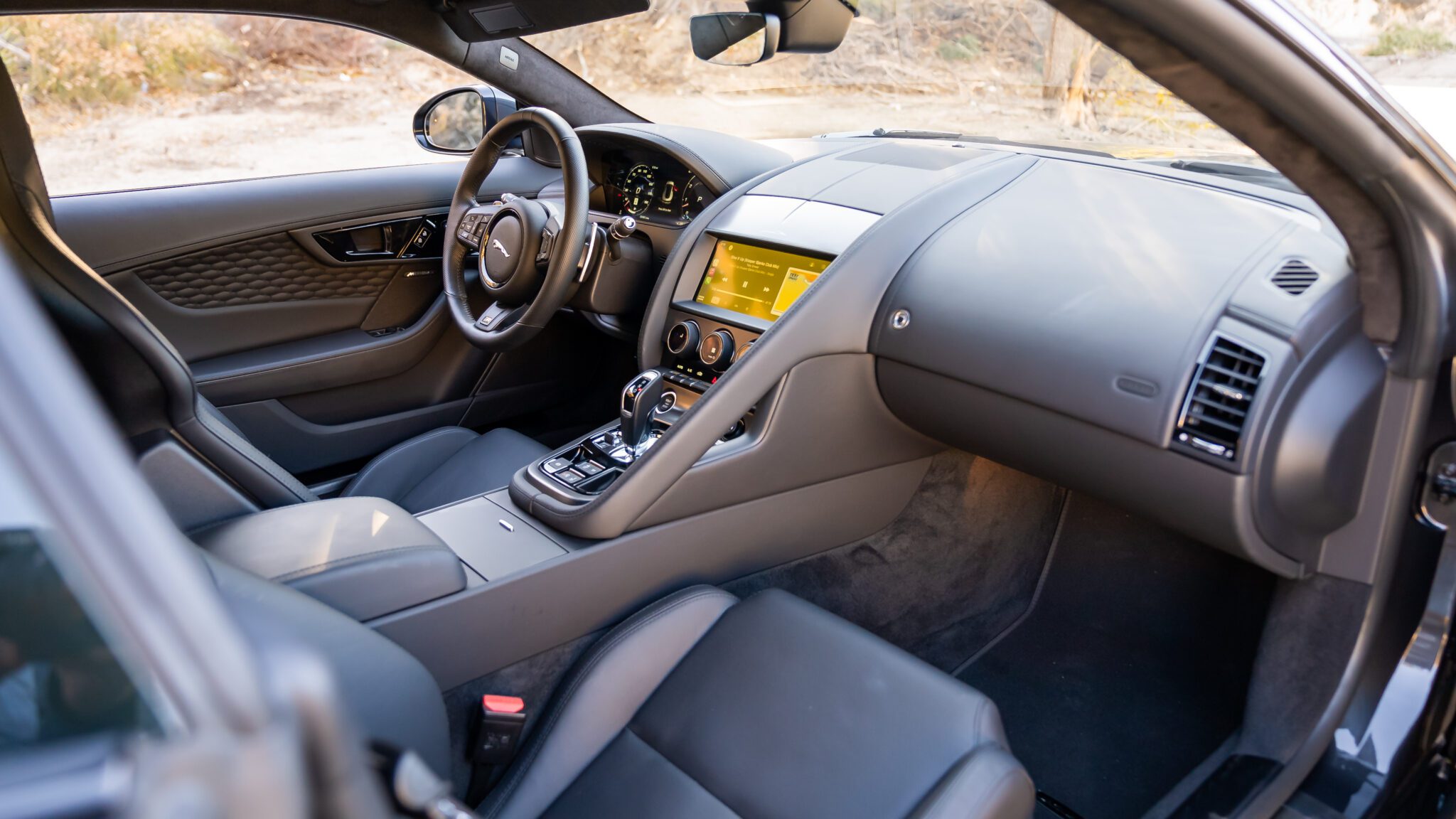
The Jaguar F-Type’s standard seats are excellently supportive yet quite comfortable for longer rides. They allow for an excellent seating position, and despite a relatively small cabin, there’s excellent head and shoulder room. The massive rear hatch, allowing for 14.4 cubic feet of cargo space, greatly adds to this car’s practicality, further bolstering its capabilities as a powerful GT.
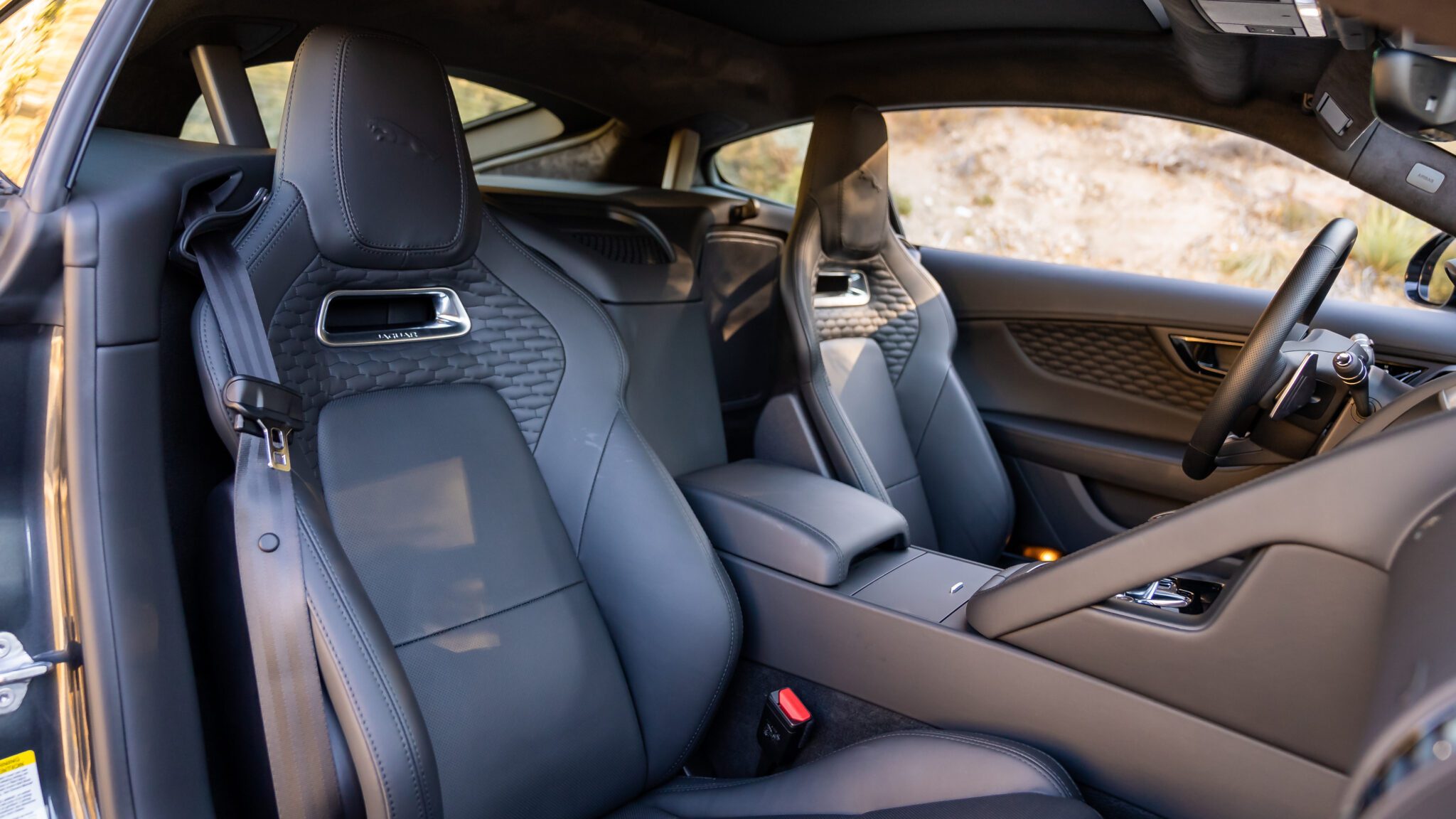
The 2024 Jaguar F-Type starts at $113,000 plus a $1,275 destination fee. Our tester was pretty lightly equipped, only sporting a $2,550 full extended leather upgrade, $2,100 20-inch five-spoke wheels, and a $1,550 Carpathian Grey Premium paint finish. This adds up to an as-tested price of $120,575, making it still quite a bargain compared to the aforementioned 911 or even the Mercedes-AMG GT Coupe, which starts at $136,050.
For those looking for an elegantly styled two-door with a characterful and engaging engine, the Jaguar F-Type makes a compelling case for itself. Factor in the price delta between it and its closest rivals, and the F-Type looks like an outright bargain.
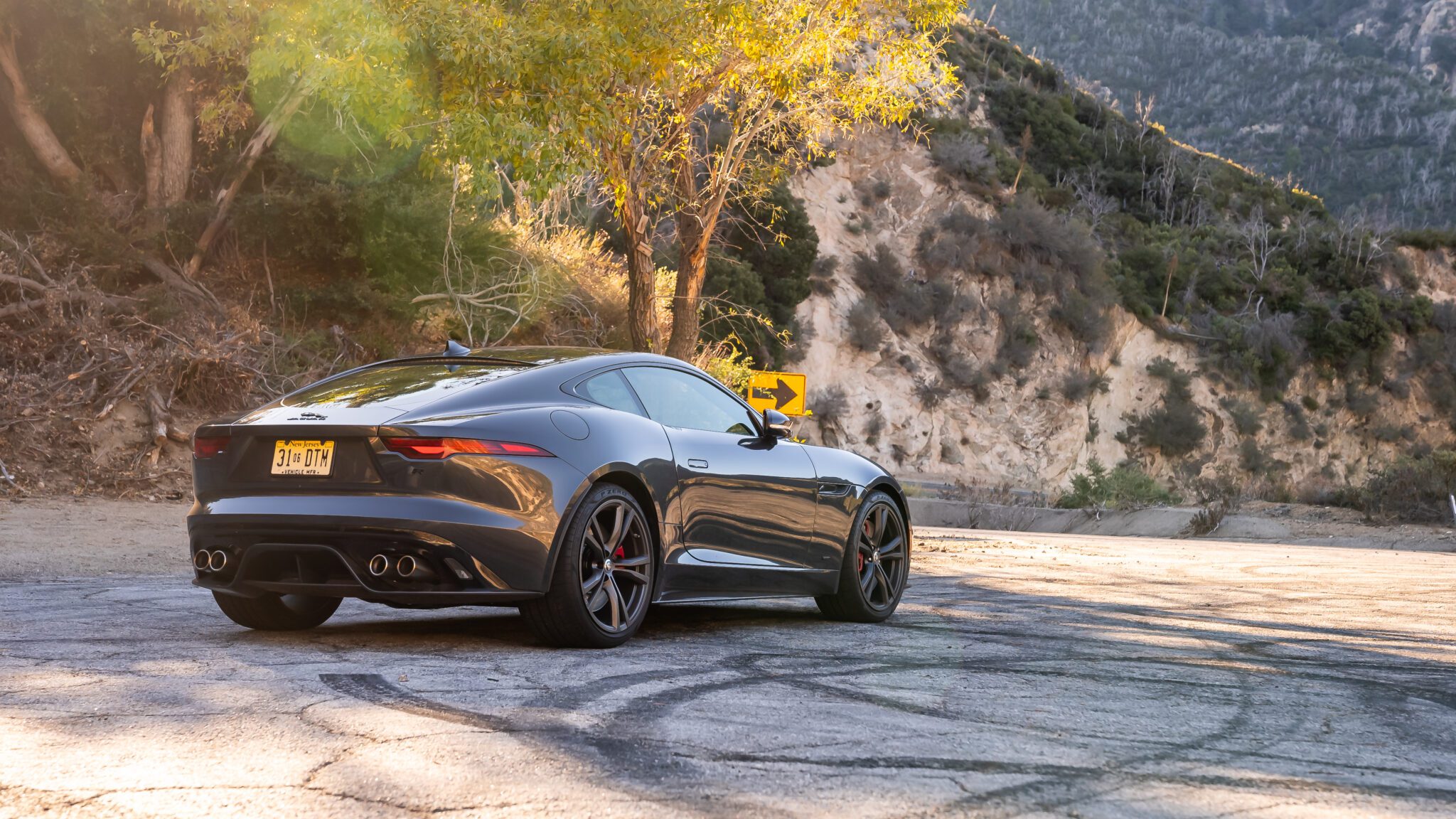
There are trade-offs, though. Its limits on a back road are comparatively low for something producing 575 horsepower, with its tendency to understeer and imprecise handling. It’s a car that’s difficult to connect with, which is not a problem for a high-powered GT but a major shortcoming from what’s positioned as a genuine sports car.
Jaguar has announced that 2024 will be the F-Type’s final year, with no clear replacement. As the brand repositions itself, committing to an all-electric future, the V8 that defines its sportiest offering will shortly go with it. The F-Type’s days are numbered, but after our week on the road and paying close attention to its closest competitors, we’re left wondering: Will anyone miss it?

